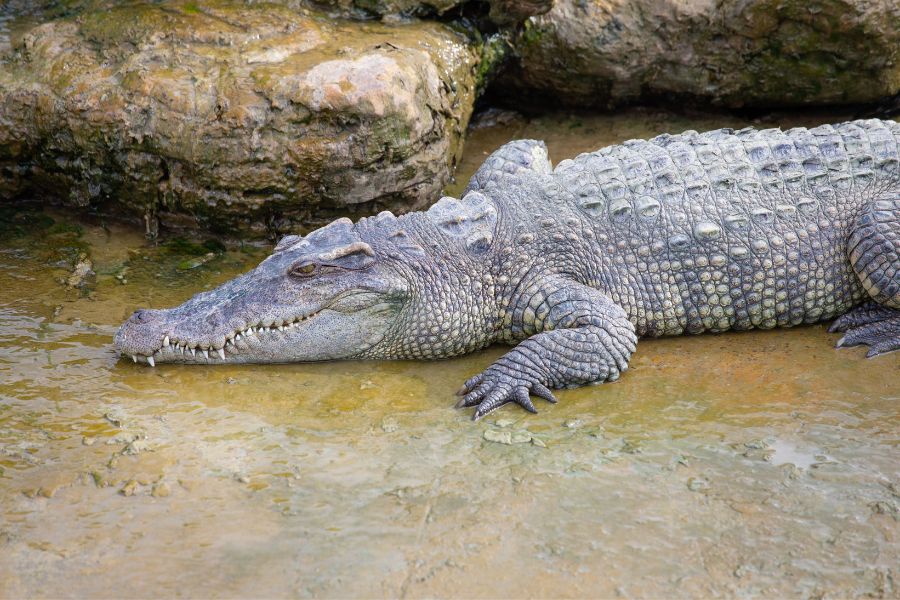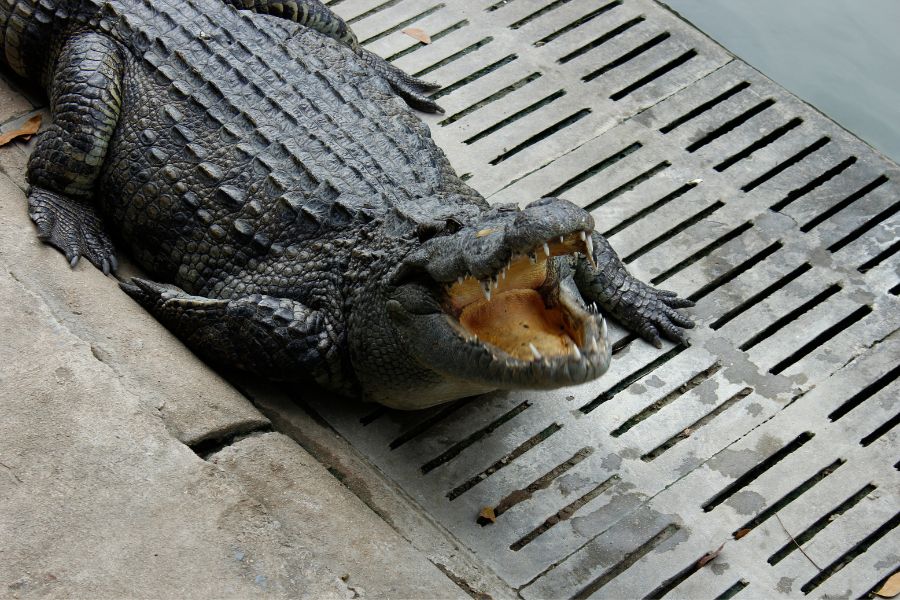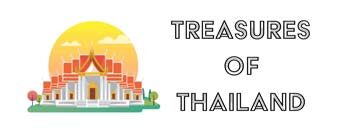Are you planning a trip to Thailand’s lush jungles and lakes and stopped to think; hang on, are there crocodiles in Thailand?
The answer is yes, there are approximately 1.2 million crocodiles in Thailand, but the vast majority of these are in crocodile farms which breed the animal for their meat and leather.
In the wild, there are only Siamese crocodiles, which are actually facing extinction.
As a tourist, you don’t really need to worry about crocodiles in the wild, but if you’re curious about them and want to know where to find crocodiles in the country, this guide will tell you all you need to know.
Are There Crocodiles In Thailand?

There are two species of crocodiles in Thailand, the saltwater crocodile and the Siamese crocodile.
Historically, there was once a huge presence of saltwater crocodiles throughout the coastal regions of Thailand including around the Bay of Bangkok and the Malay Peninsula, however there haven’t been sightings of crocodiles in these areas for a very long time.
In 1996, the saltwater crocodile was listed as Least Concern on the IUCN Red List, and up until the 1970s, it was hunted for its skin and meat.
Today, hunting crocodiles is illegal, and thought there are still salties living in the wild in Thailand, there numbers are dwindling due to illegal killing and habitat loss.
The saltwater crocodile is a dangerous animal in Thailand and a hypercarnivorous apex predator.
They hunt by ambushing their prey (usually small animals), drowning them, and then eating them whole – not something you want to go up against.
Even though there are not so many crocodiles left in Thailand, it’s still considered dangerous for humans to visit areas where crocodiles are known to have lived.
What part of Thailand has crocodiles?

Currently, the only known places where wild crocodiles have been sighted in Thailand is the Ranong River which is located on the border with Myanmar.
Many years ago, salt water crocodiles lived in the rivers and tributaries on either side of the Malay Peninsula, as well as in Phang Nga Province in Southern Thailand, but it’s very rare to see wild crocodiles in these parts today.
Pang Sida National Park, a national park on the Cambodia border, has worked to reintroduce the Saimese crocodile into its region. There are a small number of crocodiles in a river in the park which is not accessible to visitors.
Most of the crocodiles in Thailand live in farms. The most famous crocodile farms are Chainat and Chonburu, and formerly Samut Prakan.
Thailand has the world’s largest concentration of crocodile farms, and there are said to be more than 1,000 across the country.
In fact, Thailand claims to be home to the largest crocodile in captivity. His name is Yai, which means “Big” in Thai, and measures 6 meters long and weights 1,114 kg.
He lives at Samut Prakarn, which was the world’s largest crocodile farm before it closed in 2021 due to bankrupcy after the pandemic. The farm and zoo is home to more than 60,000 crocodiles, though it’s not known what happened to the animals after the zoo closed.
Can You Visit Crocodile Farms in Thailand?
Yes, you can visit crocodile farms in Thailand, but we encourage you not to.
Usually the crocodile farms that are open to tourists are not ethical. The unethical farms will have croc shows, in which the crocodiles are made to perform tricks, such as the famous “trainer putting their head inside a crocodile’s mouth to wow an audience” trick.
On top of that, crocodile farms tend to have poor conditions and often cramped conditions for the animals. Anyone who cares about animal welfare should avoid visiting these places.
Organizations such as PETA and WFFT, have worked tirelessly to shut down these types of establishment.
Final Thoughts
So there you have it, there are two types of crocodile in Thailand, the Saimese crocodile and the saltwater crocodile.
Seeing a crocodile in the wild is rare, but conservationists such as those working at Pang Sida National Park are working hard to reintroduce the native Saimese crocodile back into the wild.
Although you may want to see crocs in Thailand, it’s best to steer clear of crocodile farms which often have poor ethical practices.

I stayed at koh samui last week and l saw a crocodile in a river at 6.30 in the morning l was in shock to see it just slowly swimming along the river .
Hi Jenny, that’s incredible that you saw a crocodile in Koh Samui! They are very, very rare to see in the wild and even locals go their whole lives without seeing them.
Be aware that confusion with well grown Water monitors is possible and happens. When you see only the eyes and maybe a little of the back over the water surface it is easy to be mistaken. Water monitors are rather common along the coast, even if they normally are well hidden. 🙂
Hi John, yes you’re right, the monitor lizards in Thailand can grow to huge sizes and can often be mistaken for a crocodile at first glance. Thank you for sharing!
A correction to your story. Crocodiles do not swallow their prey whole (except for very small prey). Anything the size of… let’s say a person, would be left submerged for several days to weeks to “soften up” so chunks can be ripped off. If feeding in a large group, multiple crocs will work together to rip prey apart. I know, morbid, but for the sake of accuracy, I felt the need to point this out.
Hi Richard, thank you for your input. As we mentioned in our guide, crocodiles generally hunt small prey, which they eat whole. We’re not talking about the consumption of humans in our guide.